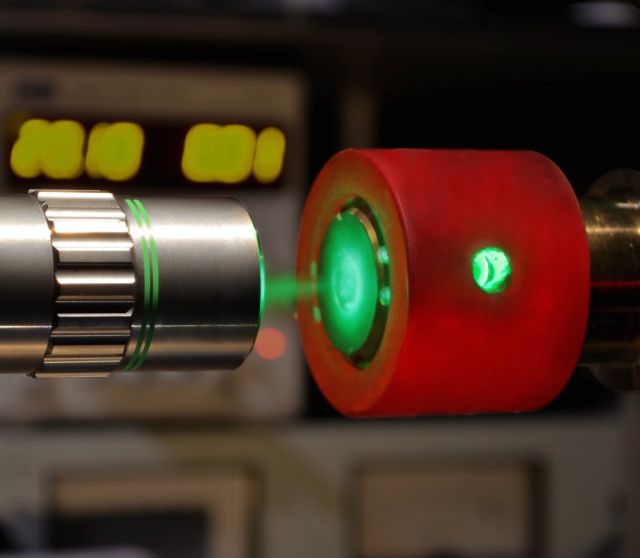While we often think of chemical elements as immutable – a metal is a metal, a gas is a gas, and so forth – these properties are what we experience on here on Earth. The universe, however, is filled with extreme pressures and temperatures that cause elements to challenge these expectations.

While some exoplanets are likely to experience liquid metal rains, close to the cores of gas giants, elements are squeezed by high pressures that make it capable of rearranging electron orbitals. On Earth, theorists have long predicted that the electrons of hydrogen could be set free, resulting in a conversion of the gas to a solid or liquid metal. While researchers predicted the existence of metallic hydrogen 80 years ago, the element has not appeared at all even when pressures were raised well above where it would be expected to be seen.
But now, three Edinburgh-based researchers reportedly placed hydrogen under the highest pressures yet achieved and experienced something different. Scans of the chemical bonds that typically link hydrogen into a molecule began to break down, resulting in the possible appearance of a metallic form.
Similar to other high-pressure experiments, the new study relies on what’s known as diamond anvils, which use two diamonds to crush any materials that are placed between them. For this experiment, the material reached pressures over 380 GigaPascals, with each GigaPascal being equivalent to approximately 10,000 atmospheres of pressure.
Hydrogen traditionally comes in molecular form with two atoms sharing electrons, which keeps them from circulating freely. This bond determines several of the molecules properties, including the wavelengths of light it absorbs as the electrons change energy levels or the bond between them stretches. To make a metal, you would have to dissolve the bond and change the properties.
Under visible light, hydrogen is typically transparent and does not absorb any wavelengths, but that changed under the extreme pressure.
“The possible appearance of conducting electrons due to dissociation could explain the very dark appearance of the sample as seen in transmitted and reflected light in the visible region,” the researchers explained.
They also used Raman spectroscopy to explore the bond as it helps provide information on its vibrations. At such high pressure, two modes of vibration in hydrogen molecules began to disappear and the remaining vibrational modes started to quickly decrease as well.
The very weak signs of a chemical bond suggest that it could only take a bit more pressure to get fully metallic hydrogen. But given its history and how long it’s taken to get here, many people will believe it when they see it.
Source: Ars Technica
Advertisement
Learn more about Electronic Products Magazine





